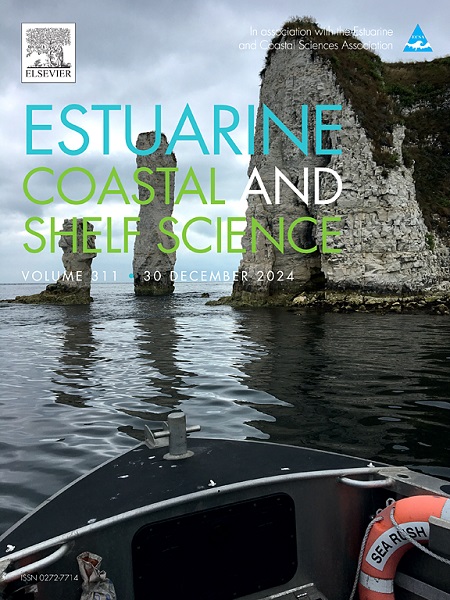Global drifters: the ecological role of non-native macroalgae as beach wrack subsidies
IF 2.6
3区 地球科学
Q1 MARINE & FRESHWATER BIOLOGY
引用次数: 0
Abstract
Wrack macroalgae play a key ecological role in beach ecosystems, recycling nutrients, reinforcing trophic linkages between sea and land, and strongly shaping consumer populations and food web dynamics. However, the consequences of changing wrack resources for macroinvertebrate communities remain uncertain. We manipulated in situ the availability of eight macroalgae species of different origin (natives vs non-native) and morphological structures (simple vs complex) to test hypotheses about how changes in the type and number of macroalgae contributing to wrack detrital resources might affect beach macroinvertebrate assemblages. Wrack-associated macrofauna assemblages and total abundance were not affected by the presence of non-native wrack. We highlight that the ecological relevance of non-native wrack in the beach ecosystem functioning is potentially equivalent to their native counterparts. The structural complexity of the wrack patches was the main factor driving differences between the wrack-associated macrofauna assemblages. Our study suggests that the aggregation of terrestrial invertebrates in structurally simple wrack represents a general ecological pattern in sandy beach ecosystems. The typical wrack consumer Talitrus saltator showed specific responses to particular macroalgae species, avoiding the less palatable macroalgae. The diversity response of the macrofauna community is more linked to the biochemical composition of the specific macroalgae, such as phenol concentrations than to the morphological structure or the origin of the macroalgae. By providing more diverse habitat conditions and food sources, the mixture of different wrack species showed a synergistic effect enhancing macrofauna abundance and the number of taxa compared to wrack monocultures. Understanding the ecological role of the different types of beach wrack, especially the non-native inputs, is important to develop clear and ecologically sustainable strategies for management responses to beach wrack accumulations.
全球漂流者:非本地大型藻类作为海滩破坏者补贴的生态作用
沉船巨藻在海滩生态系统中发挥着关键的生态作用,回收养分,加强海洋和陆地之间的营养联系,并强烈地塑造消费者群体和食物网动态。然而,改变大型无脊椎动物群落的残骸资源的后果仍然不确定。我们对不同来源(本地与非本地)和形态结构(简单与复杂)的8种大型藻类的可用性进行了原位操纵,以验证对沉船碎屑资源有贡献的大型藻类的类型和数量的变化如何影响海滩大型无脊椎动物群落的假设。与沉船相关的大型动物群落和总丰度不受非本土沉船存在的影响。我们强调,在海滩生态系统功能中,非本土残骸的生态相关性可能与本土残骸相当。沉船斑块的结构复杂性是导致沉船相关大型动物组合差异的主要因素。我们的研究表明,陆地无脊椎动物在结构简单的残骸中聚集代表了沙滩生态系统的一般生态模式。典型的沉船消费者跳藻对特定的大型藻类有特定的反应,避免食用不太美味的大型藻类。大型动物群落的多样性响应更多地与特定大型藻类的生化组成(如苯酚浓度)有关,而不是与大型藻类的形态结构或来源有关。通过提供更多样化的生境条件和食物来源,与单一栽培相比,不同遗迹物种的混合栽培表现出协同效应,增加了大型动物的丰度和类群数量。了解不同类型的海滩残骸的生态作用,特别是非本地的投入,对于制定明确和生态可持续的管理策略,以应对海滩残骸的积累是很重要的。
本文章由计算机程序翻译,如有差异,请以英文原文为准。
求助全文
约1分钟内获得全文
求助全文
来源期刊
CiteScore
5.60
自引率
7.10%
发文量
374
审稿时长
9 months
期刊介绍:
Estuarine, Coastal and Shelf Science is an international multidisciplinary journal devoted to the analysis of saline water phenomena ranging from the outer edge of the continental shelf to the upper limits of the tidal zone. The journal provides a unique forum, unifying the multidisciplinary approaches to the study of the oceanography of estuaries, coastal zones, and continental shelf seas. It features original research papers, review papers and short communications treating such disciplines as zoology, botany, geology, sedimentology, physical oceanography.

 求助内容:
求助内容: 应助结果提醒方式:
应助结果提醒方式:


